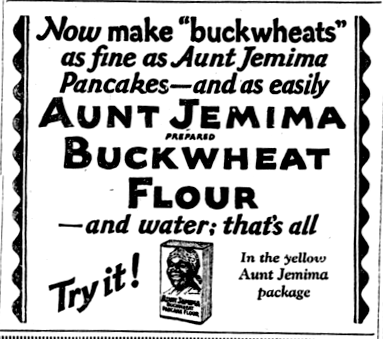
www.historydefined.net
The Tumultuous Life of Model Margaux Hemingway
When Margaux Hemingway was born‚ she was born into greatness. It all had to do with her famous last name.
A darling daughter to the Hemingway name‚ Margaux was always destined to live her life somewhat in the spotlight. Before her tragic end‚ she carved out a place for herself in the world totally different from the literary achievements her grandfather was famous for.Â
With the expectations of her family legacy hanging in the air‚ Margaux would make her mark on the catwalk instead of the pages of a book.
But even with her self-earned fame‚ all was not well for Margaux‚ and there were ripples of trouble beneath her beautiful surface. Let’s take a closer look at the sparkling‚ all-too-short life of Margaux Hemingway.
Margaux Hemingway‚ 1976. Publicity still from Lipstick
The Early Life of Margaux Hemingway
Born to Jack Hemingway‚ son of Ernest Hemingway‚ and his wife Byra Louise‚ Margaux was first called Margot Louise Hemingway. She was born on February 16th‚ 1954 in Portland Oregon‚ and by all accounts was a healthy baby.Â
Young Margaux had two siblings‚ Mariel‚ and Joan Hemmingway.Â
Later in life‚ the girl formerly known as Margot would change the spelling to the one that we are more familiar with‚ Margaux. On the night Marguax was conceived‚ her parents shared a bottle of Château Margaux wine‚ and once she heard the story‚ Marguax switched the spelling to match‚ enchanted by the story.Â
Much of Margaux’s childhood was enchanted. With the money and bit of fame from her grandfather’s legacy and her father’s more modest success as a writer‚ the family was able to travel.
From Portland‚ the Hemingway’s moved to Cuba to be with grandfather Ernest Hemingway on his farm. Later they would make their way to San Francisco‚ and from there‚ Idaho‚ all the while returning to Portland occasionally.Â
But there was a much darker side to Margaux’s young life‚ too. Outside of the travel and private schools‚ Margaux suffered from various illnesses and disorders that would haunt her all her life. She spent years struggling with depression‚ bulimia‚ and later‚ alcoholism.Â
Beyond all that was the accusation of sexual abuse by her father. Marguax spoke of the abuse‚ and later‚ her sister Mariel would confirm that the sisters had been victims of Jack Hemingway.
This outwardly glamorous‚ inwardly disturbing‚ and difficult life would be a hint of the life Margaux would live as an adult. She was beautiful‚ and successful‚ but underneath it all‚ troubled.Â
RelationshipsÂ
Throughout her life‚ Margaux Hemmingway would be married twice. Her first marriage was to a man named Errol Weston in 1975‚ but the relationship ended in divorce.Â
Her second marriage would be to French filmmaker Bernard Faucher‚ but they too would end up divorced after six years.Â
Margaux Hemmingway’s CareerÂ
ModelingÂ
Margaux Hemmingway did not want to be a writer. It would have been easy for her to break into the writing scene‚ being the granddaughter of Ernest Hemmingway‚ but Margaux had other plans. She wanted to be a model‚ and with a slender build and a 6-foot-tall frame‚ she was particularly suited to the job.Â
Not only was Margaux tall‚ but she was also stunningly beautiful. With her natural sense of style‚ Margaux made a splash as soon as she entered the fashion scene. It wasn’t long until she was garnering attention from photographers and designers alike.Â
In the 1970s‚ Margaux could be seen on the cover of magazines like Cosmopolitan and Vogue‚ but her biggest success as a model was landing a million-dollar contract with Fabergé to be the face of their new Babe perfume. This contract would be the first million-dollar contract ever offered to a model.Â
Margaux after she had become a famous model
Margaux Hemingway: Silver Screen StarÂ
Once she had conquered the catwalk‚ Margaux’s next pursuit was a film career. And just like with modeling‚ she was a natural at acting.
During all of this‚ Margaux was still dealing with mental illness and addictions. When she was on the screen the audience was captivated and unaware of the actress’s struggles.Â
In 1984‚ Margaux was involved in a ski accident that left her unable to be as active as she usually was. The consequence of her increasingly sedentary lifestyle post-injury was a weight gain of nearly 75 pounds‚ which made the model and actress even more depressed.Â
From there‚ Margaux would appear in Playboy in 1990‚ hoping to stage a comeback. However‚ it didn’t launch her back into the public eye the way she hoped it would.Â
Frederic Forrest and Margaux Hemingway during a break on the set of Double Obsession
What Movies Did Margaux Hemingway Play In?
Although Margaux’s film career was short‚ she did star in quite a few films. Some of Margaux’s most popular films include:Â
LipstickÂ
Date: April 2‚ 1976
Description: A dark thriller about revenge that was panned at the time for being too graphic‚ but would become popular as a cult film in later yearsÂ
They Call Me Bruce?Â
Date: June 23‚ 1982Â
Description: A comedy film that Hemingway had a small cameo in.
Over the Brooklyn Bridge
Date: October 1984
Description: A comedy-drama that explored cultural identity.Â
Killing Machine:Â
Date: 1994
Description: Margaux was the star of Killing Machine‚ which was an action film that followed a vigilante‚ played by Margaux‚ who sought out revenge for her sister.Â
Inner Sanctum:Â
Date: February 1991
Description: Another thriller‚ this film was about a psychologist who found themselves in the middle of a murder mystery.Â
How Did Margaux Hemingway Die?
Margaux Hemingway cut her own path in the world‚ turning away from the literary pursuits so familiar to her family and instead making a name for herself as a model and actress.Â
But despite all of this‚ Margaux couldn’t seem to escape the Hemingway curse.Â
On July 1st‚ 1996‚ Margaux Hemingway was found dead in her studio apartment in Santa Monica California. It was confirmed later that she had committed suicide by overdosing on the barbiturate phenobarbital.Â
35 years earlier‚ almost to the day‚ her grandfather Ernest Hemingway had committed suicide by shooting himself. When Margaux died‚ she was the fifth in her family to take her own life.Â
Margaux Hemingway‚ on the outside‚ seemed like her life was finally taking a turn for the better when she died. But no one but Margaux knew the depth of her loneliness and mental health struggles.
Today‚ we look back on the tall‚ beautiful‚ and strong Hemingway daughter with well-deserved awe‚ and sadness for a life lost too soon.Â
ReferencesÂ
“Margaux Hemingway Is Dead; Model and Actress Was 41”‚ Lynette HollowayÂ
https://www.nytimes.com/1996/07/03/arts/margaux-hemingway-is-dead-model-and-actress-was-41.html
“Coroner Says Death of Actress Was Suicide”
https://www.nytimes.com/1996/08/21/us/coroner-says-death-of-actress-was-suicide.htmlThe post The Tumultuous Life of Model Margaux Hemingway first appeared on History Defined.











